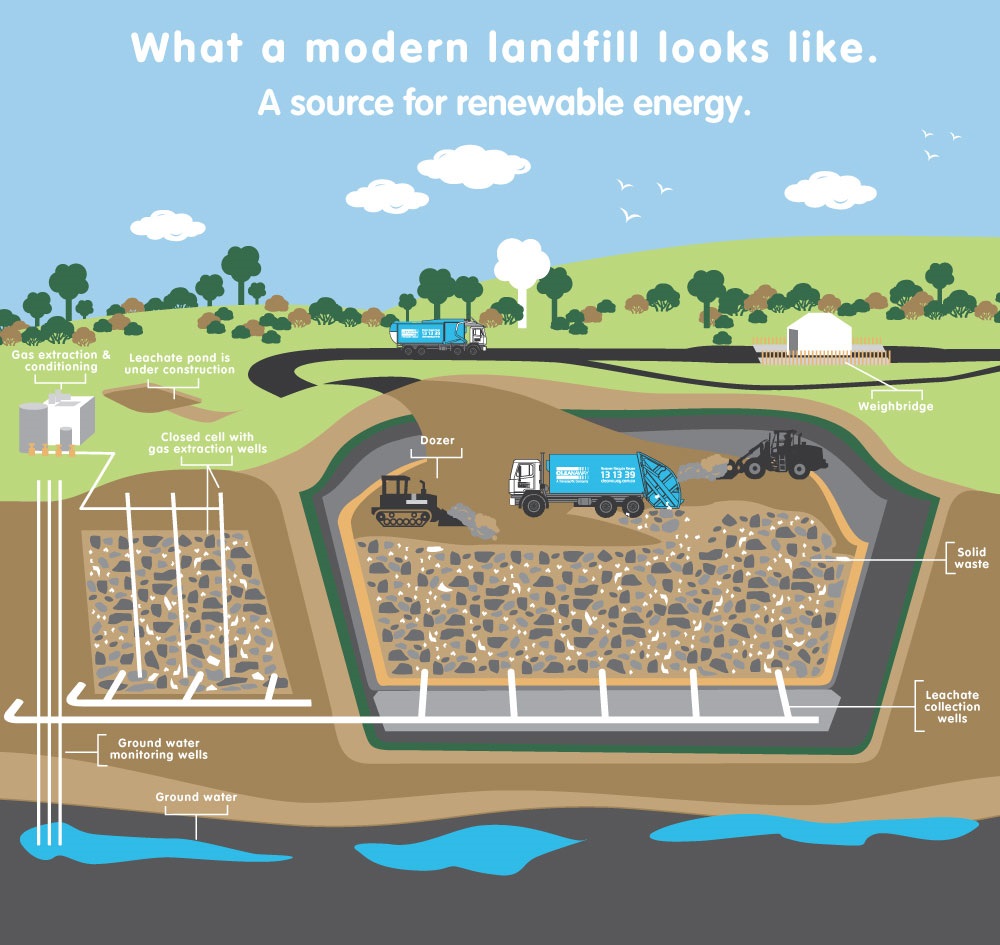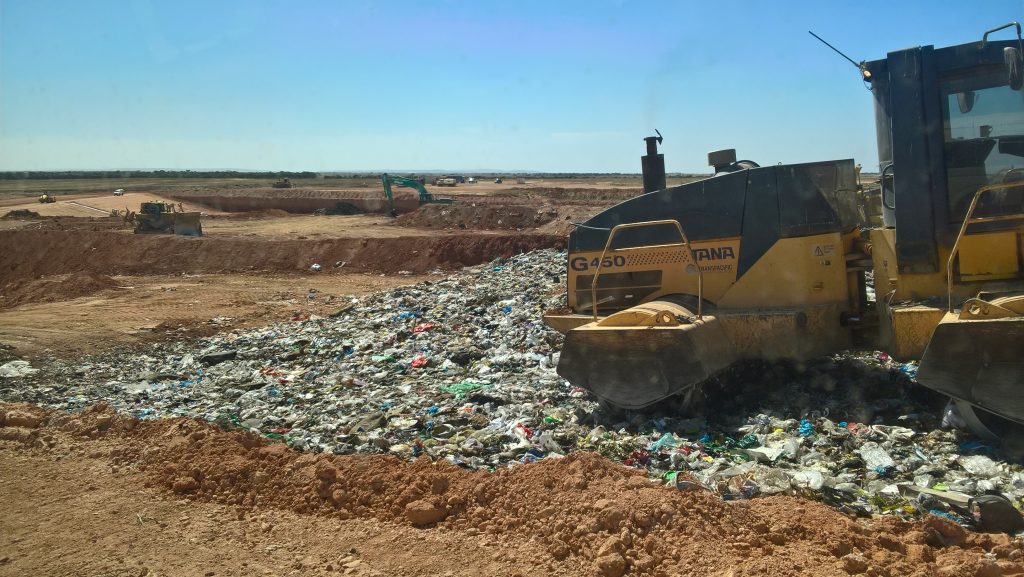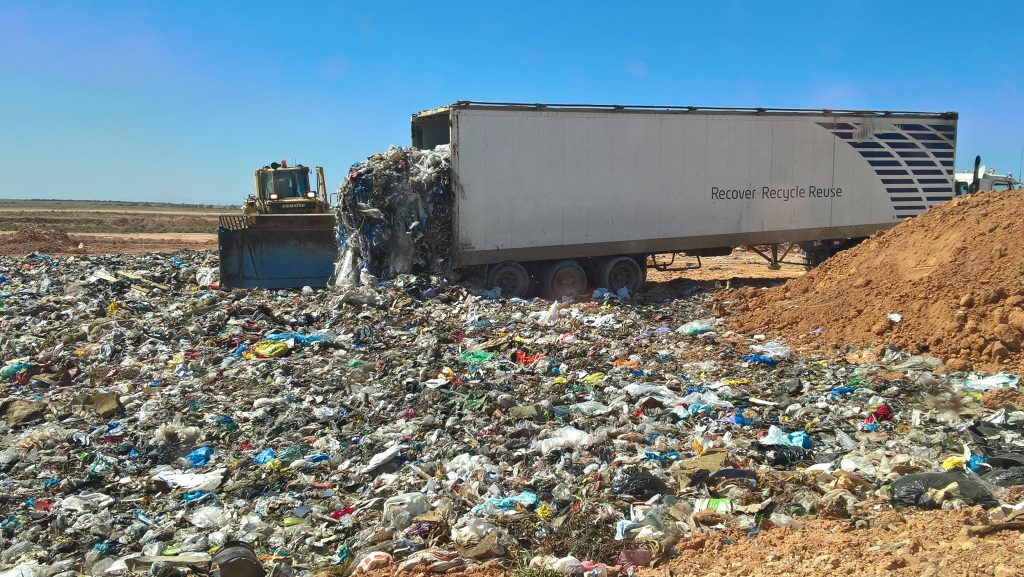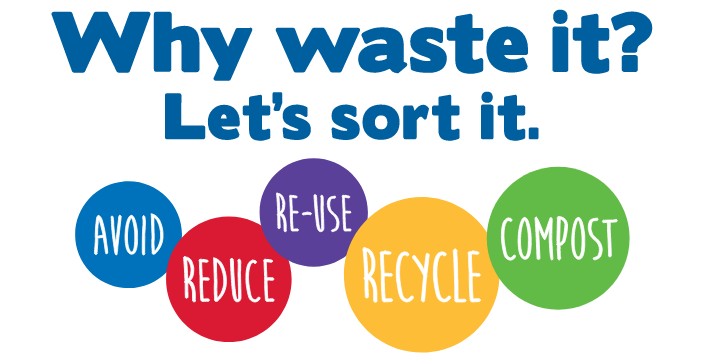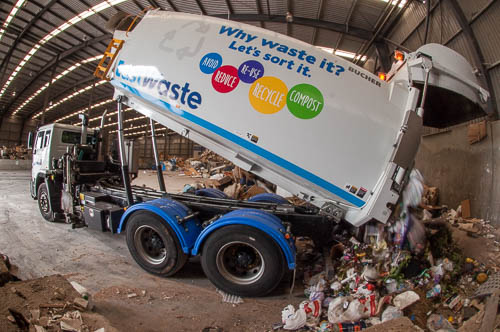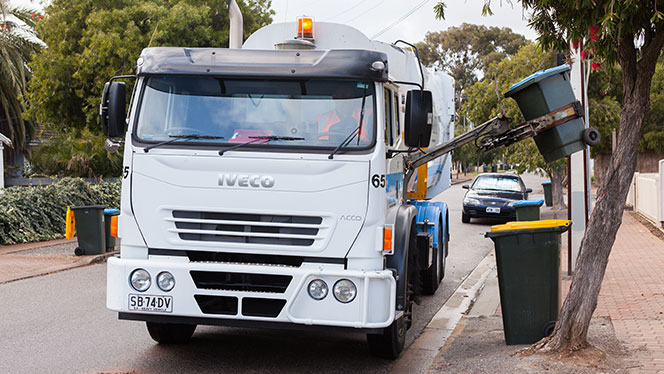
What is waste?
Please note: your waste to landfill bin may have a blue or red lid depending on what could area you are in.
Waste is something that is no longer useful or wanted, that can’t be reused, recovered, recycled or composted in any way. These items will end up being sent to landfill.
Once in landfill these resources are lost and and will take a very long time to break down, if ever.
If organic material, such as food end up in landfill, it rots creating methane which is a harmful greenhouse gas.
Examples of waste include:
Why waste it? When you can avoid, reduce, re-use, recycle or compost it!
All of the items that we use and consume; eg. cars, buildings, clothes, food, containers, and furniture, are made from our environment and use natural resources like water, coal, oil or wood. If these products aren’t reused or recycled and sent to landfill, then new material has to come from our environment to create new products. This uses energy, water and other natural resources. Greenhouse gases, which contribute to climate change, are created by the production and transport of materials as well as through rotting organic material in landfill. There is also less and less space available for landfill sites.
Avoiding waste is the best option for the environment, then reducing, reusing and recycling as depicted by the waste management hierachy below;
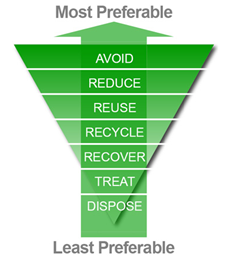
Why is avoiding and diverting waste from landfill important?
Sending waste to landfill is expensive and charged by weight, with a levy of $140 per tonne in metro Adelaide. It costs 60% more to send materials to landfill than recycling them through the yellow bin and 85% than composting material through the green bin. East Waste Councils could save $2.7 million dollars per year if food and other compostable materials were placed in the green bin rather than the waste to landfill bin.
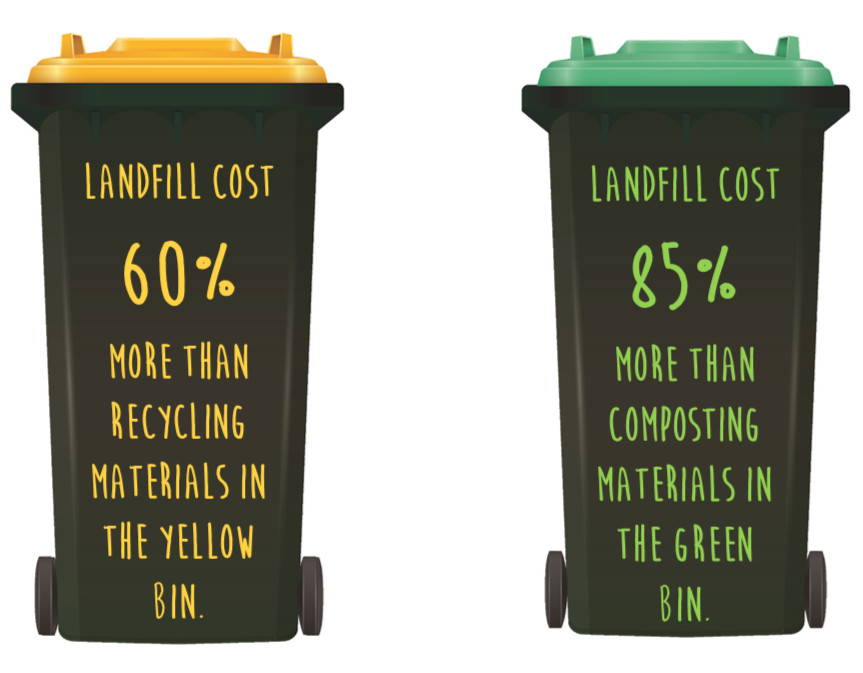
Waste avoidance tips
| 1. | Compost your food scraps using your own compost system at home or through your green food and garden organics bin. A recent audit found that 42% material placed in the waste to landfill bin was food and compostable material which could have been composted through the green bin or at home instead. |
| 2. | Shop at a bulk food and cleaning product store and bring your reusable and refillable containers, jars and bags with you. CLICK HERE to download a list of store locations |
| 3. | Use a re-usable coffee cup, some cafes now offer a discount for using your own cup. |
| 4. | Use re-usable and refillable containers for storing food and drinks instead of single-use disposable containers. |
| 5. | Bring your reusable shopping bags with you when shopping and store them in your car so that you don’t forget them, and for those unplanned ‘stop by the shop on the way home’ occasions. |
| 6. | Prepare a list of the things you need before you go shopping to avoid ending up with items that you may not need or want. |
| 7. | Buy larger, bulk packages and avoid small individually wrapped items. |
| 8. | Buy cleaning products in concentrated form and use a refillable container to store it. Or, why not make your own homemade cleaning products using ingredients such baking soda, vinegar and lemon juice. There are many great recipes on the web. |
| 9. | Recycle paper, cardboard, rigid plastics, metal and glass through the yellow lid recycling bin. A recent audit found that 13.5% of recyclable material was placed in the waste to landfill bin. |
| 10. | Prepare smaller meals and pack the leftovers into containers for ready-made lunches or for dinner the following night. |
| 11. | Donate your unwanted clothes, toys and other goods to charity and second hand stores. *only good quality working items should be donated! |
| 12. | Purchase pre-loved, second-hand items this will save money as well as resources. |
| 13. | Avoid using coffee pod machines as they create a huge amount of waste. Many pods are made from aluminium which is one of the most energy intensive materials to produce. Nespresso offers a recycling service for pods, so if you already have a pod machine, please recycle your pods at one of their collection stores. |
| 14. | Recycle tricky items through special drop-off locations and options listed on our ‘tricky items’ listing. |
These waste avoidance tips will save you money as well as saving the planet.
Download the flyers below for more information on ways you can avoid, reduce and re-use your waste.
What happens to waste after collection?
Waste collected in your blue or red lidded bins is taken to waste processing facilities and placed into landfill. The landfill sites are large holes dug into the ground, where rubbish is compacted and then covered over with soil once the site is full. Pipes are used to extract the gases released as organic material breaks down in the landfill site. This gas can be used to generate electricity.
